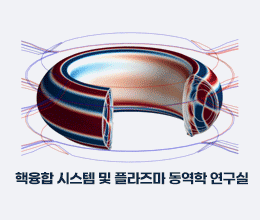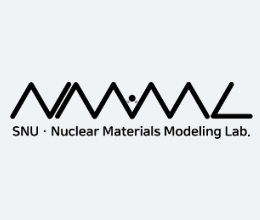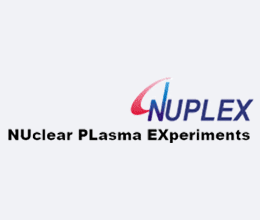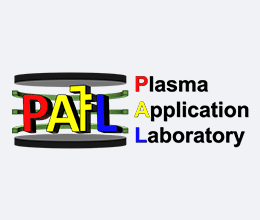3 Dimensional Stellarator & Tokamak Laboratory
- · Professor : Jong-Kyu Park
- · Phone : 02-880-7120
- · Location : 36-304

The 3D Stellarator and Tokamak (3DST) Laboratory is dedicated to developing optimized solutions for magnetically confined fusion systems. To achieve this, the lab focuses on advancing theoretical models and computational frameworks across multiple scales to establish a validated integrated predictive model. The newly developed modeling framework incorporates 3D constraints and boundary conditions, enabling system-level analysis and prediction across diverse scales—from large, fast magnetohydrodynamic (MHD) instabilities to small-scale kinetic transport and turbulence phenomena. Currently, the lab is enhancing 3D plasma equilibrium models by integrating kinetic effects and drift-MHD modeling. This research aims to develop novel methodologies for simultaneously predicting key instabilities—interchange, locking, tearing, peeling, and ballooning modes—along with their associated transport behaviors in toroidal magnetic confinement systems. To validate predictions and implement adaptive control strategies, the lab collaborates closely with domestic and international fusion institutions. By leveraging these predictive and control capabilities, the 3DST Laboratory seeks to optimize fusion system configurations and scenarios, ultimately driving the development of innovative integrated solutions that enhance the performance and reliability of future fusion reactors.
Plasma Laboratory for Advanced REsearch
- · Professor : Yong-Su Na
- · Phone : 02-880-8336
- · Location : 30-103 / 30-104
- · Homepage : http://fusma.snu.ac.kr/plare/
Plasma Laboratory for Advanced Research conducts research to sustain stable and continuous fusion reactions in tokamak fusion reactors. The laboratory develops tokamak operation scenarios and performs integrated computational simulation analyses to achieve high-performance plasma in devices such as VEST and KSTAR. The laboratory also focuses on plasma control technology and the design of next-generation fusion devices using a virtual tokamak simulator. In addition, the laboratory explores various fusion-related topics, including plasma discharge, transport, instabilities, heating, and current drive, in an integrated manner. Furthermore, the laboratory collaborates with the Korea Institute of Fusion Energy as well as leading fusion research groups worldwide on joint research projects.
Nuclear materials Modeling Laboratory
- · Professor : Takuji Oda
- · Phone : 02-880-7207
- · Location : 31-1-404
- · Homepage : https://sites.google.com/snu.ac.kr/snu-nmml/
The Nuclear Materials Modeling Laboratory (NMML) studies nuclear materials using computational simulations such as molecular dynamics and first-principles calculations, which can analyze the motion of atoms, and theoretical methods such as thermodynamics and kinetics. (1) To enhance the safety and economics of using liquid metals and molten salts as coolants in fast reactors and tritium breeding materials in fusion reactors, it is necessary to suppress material corrosion and fire caused by high chemical reactivity. We apply computational simulations and theories to accurately evaluate the chemical reactivity and develop a method to effectively control the factors that determine the reactivity of these liquid materials, as well as discover new liquid materials through a materials informatics approach that integrates atomistic simulations and machine learning methods. (2) Tritium, a hydrogen isotope and the fuel for nuclear fusion reactors, is radioactive and rarely found in nature. Therefore, to realize a safe and economical nuclear fusion reactor, we need to thoroughly understand and control the behavior of tritium in various nuclear fusion reactor materials. We are addressing this issue by combining atomistic simulations and experiments performed through national and international collaborations. (3) Nuclear materials are exposed to energetic particles such as fast neutrons, which create a variety of defects and degrade the performance of the material through complex reactions that do not occur under normal conditions. By combining atomic simulations and machine learning techniques, we are building an accurate radiation damage prediction model.
Seoul National University Plasma & Ion Beam Laboratory
- · Professor : Yong-Seok Hwang
- · Phone : 02-880-4337
- · Location : 31-102 / 31-117 / 31-121
- · Homepage : http://nuplex.snu.ac.kr
The Plasma & Ion Beam Laboratory has built and operates the Versatile Experiment Spherical Torus (VEST), the only experimental spherical tokamak in Korea. Through actual fusion plasma experiments using the VEST, we are conducting research on all aspects of fusion plasma, including plasma discharge, heating, diagnosis, control, and disruption, with the ultimate goal of realizing fusion power as a viable energy source for the future.
In particular, we have developed an effective plasma discharge scenario using a Trapped Particle Configuration (TPC) magnetic structure and successfully installed and operated a Neutral Beam Injection (NBI) heating system, which is widely used for heating fusion plasma. In addition, we are developing and upgrading various diagnostic instruments such as magnetic diagnostics, Thomson scattering diagnostics, interferometers, photonic phase and neutral pressure gauges to measure various parameters of the fusion plasma, and developing fusion plasma equilibrium and prediction codes based on these data to conduct research on plasma control and decay mechanisms.
Based on these studies, we are working with the simulation team to solve challenging problems in fusion reactors, such as stable operation and plasma instability analysis. We also plan to build a virtual fusion reactor that can operate a high-performance spherical tokamak using artificial intelligence techniques, with the ultimate goal of realizing fusion power generation.
In particular, we have developed an effective plasma discharge scenario using a Trapped Particle Configuration (TPC) magnetic structure and successfully installed and operated a Neutral Beam Injection (NBI) heating system, which is widely used for heating fusion plasma. In addition, we are developing and upgrading various diagnostic instruments such as magnetic diagnostics, Thomson scattering diagnostics, interferometers, photonic phase and neutral pressure gauges to measure various parameters of the fusion plasma, and developing fusion plasma equilibrium and prediction codes based on these data to conduct research on plasma control and decay mechanisms.
Based on these studies, we are working with the simulation team to solve challenging problems in fusion reactors, such as stable operation and plasma instability analysis. We also plan to build a virtual fusion reactor that can operate a high-performance spherical tokamak using artificial intelligence techniques, with the ultimate goal of realizing fusion power generation.
Plasma Application Laboratory
- · Professor : Gon-Ho Kim
- · Phone : 02-880-8971
- · Location : 30-101 / 30-102 / 30-119 / 31-104 / 31-105
- · Homepage : http://pal.snu.ac.kr
The Plasma Applications Laboratory focuses on engineering and industrial applications of low-temperature plasma.
In semiconductor and display manufacturing, atomic-scale precision process control is essential, with most processes relying on low-temperature plasma. The lab studies the physics of low-temperature plasma and develops precise process control technologies to enhance manufacturing efficiency.
To improve process yield, the lab integrates plasma and process data to develop an Advanced Process Control (APC) algorithm. This algorithm is implemented in actual process equipment, allowing real-world validation and continuous refinement.
The lab also works to transform conventional plasma control technologies—once used heuristically due to their complexity—into explainable and systematic control methods. This shift enhances process predictability, reliability, and optimization.
Through these efforts, the lab actively leads advancements in both low-temperature plasma research and the broader field of industrial plasma engineering.
In semiconductor and display manufacturing, atomic-scale precision process control is essential, with most processes relying on low-temperature plasma. The lab studies the physics of low-temperature plasma and develops precise process control technologies to enhance manufacturing efficiency.
To improve process yield, the lab integrates plasma and process data to develop an Advanced Process Control (APC) algorithm. This algorithm is implemented in actual process equipment, allowing real-world validation and continuous refinement.
The lab also works to transform conventional plasma control technologies—once used heuristically due to their complexity—into explainable and systematic control methods. This shift enhances process predictability, reliability, and optimization.
Through these efforts, the lab actively leads advancements in both low-temperature plasma research and the broader field of industrial plasma engineering.






